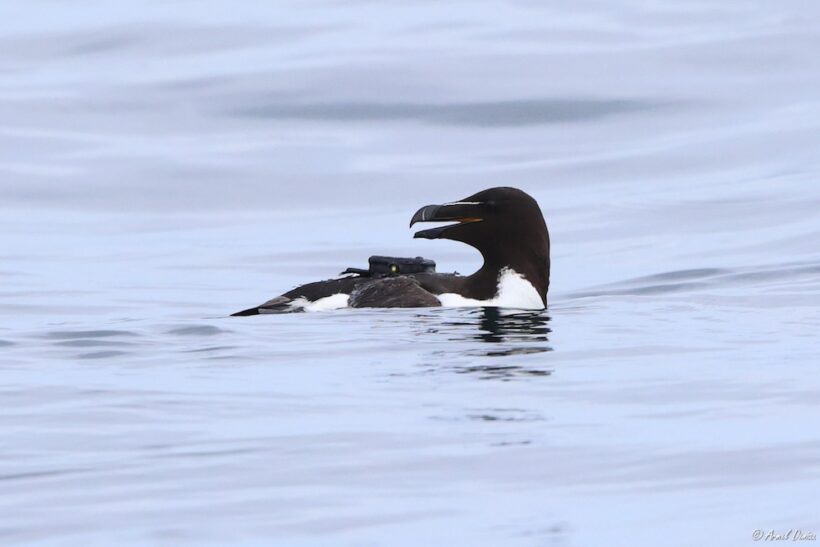Alca torda
![]()
![]()
Also known as the “little penguin”, this species nests in small numbers on the cliffs of the Côtes d’Armor, often with common guillemots. Penguins generally fly low over the water, capturing their prey by diving to depths of up to 20m. In winter, northern European penguins migrate south, and the species is widespread in French waters in the English Channel and Atlantic. Penguins are often seen, along with guillemots, very close to the coast during winter storms.
The species has suffered a massive decline in mainland France since the 1960s, and remains under threat today, particularly from hydrocarbons and nest predation by peregrine falcons and ravens. Very little is known about their breeding and wintering distribution at sea in France.
Penguins nest on steep cliffs that are difficult to access. For this reason, and to avoid disturbing the colonies, we capture adults who are not on their nests but resting at sea or on rocky islets on the edge of the Sept-Iles National Nature Reserve colony.
To discover the movements of wintering penguins along the French coast, individuals are captured in winter directly at sea in sheltered gathering areas such as the Brest roadstead.
A few individuals brought to care centers, often after winter storms, may also be fitted with GPS before being released.
The penguins are equipped with OT10-D GPS beacons, which are specially designed for diving, recording pressure and depth. These small 10g beacons transmit data regularly via 3G and are attached to the feathers on the bird’s lower back with special tape. The beacons fall off after a few weeks or months as the tape wears down or the feathers moult.
![]() Migratory in France
Migratory in France
![]() Breeder in France
Breeder in France
![]() : Wintering in France
: Wintering in France

